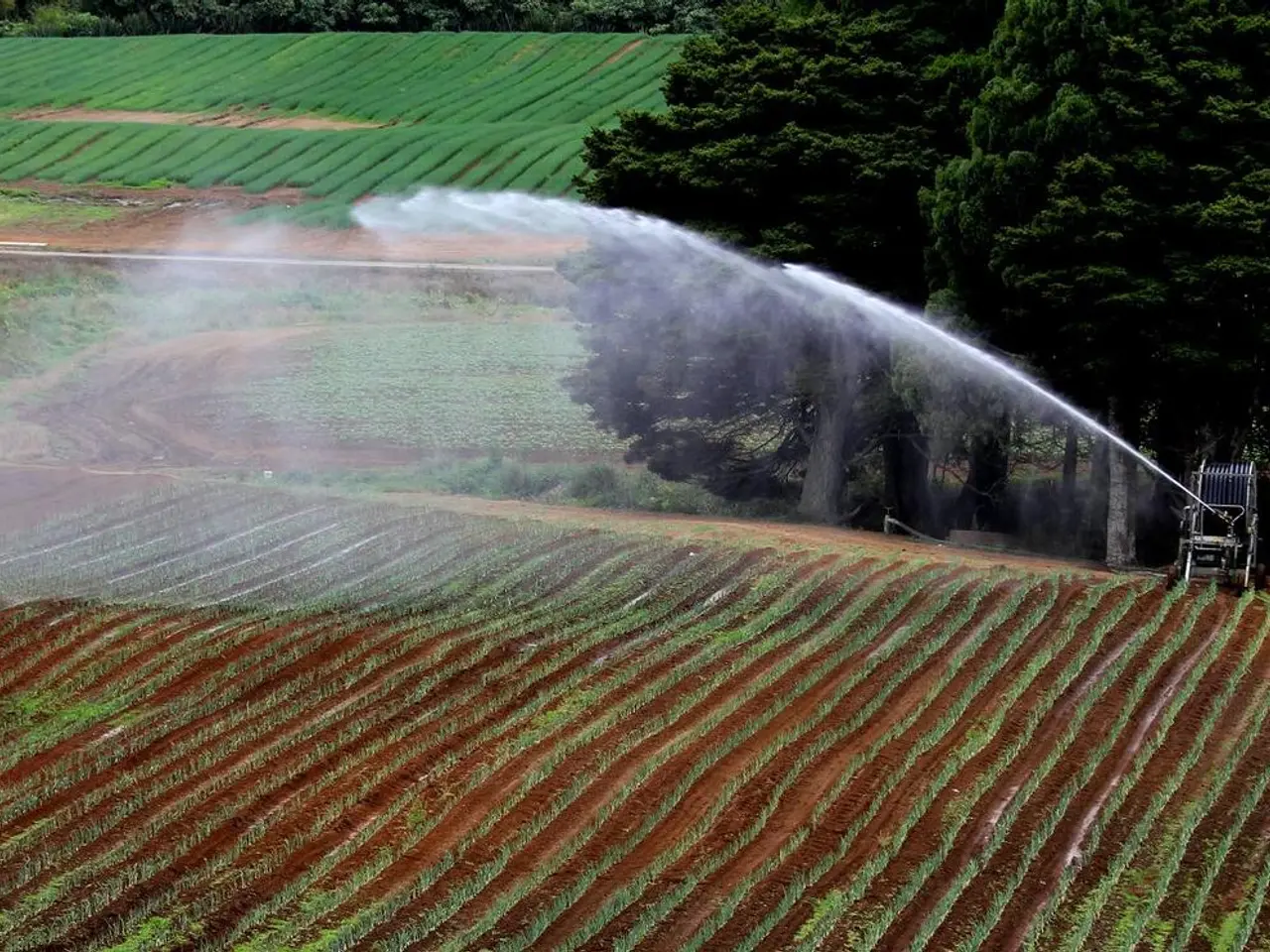HarvestingLettuce: Nurturing Fresh Vegetables to Satisfy Increasing Demand
In India, growing lettuce has become an attractive venture for farmers and home gardeners alike, thanks to its crisp flavour, versatility, and rising demand in urban markets. By following best practices tailored to Indian conditions, one can cultivate lettuce that's perfect for both raw and cooked uses.
For starters, lettuce thrives in well-drained, fertile soils rich in organic matter, with a neutral to slightly acidic pH. A loose, sandy loam or loam soil is ideal, as it supports root development and moisture retention without waterlogging.
When it comes to seed selection, choose adaptable varieties suited to Indian climates, especially for winter cultivation (September to November). Popular varieties include Great Lakes, Iceberg, Butterhead, Romaine (Cos), and locally adapted types like Punjab Lettuce-1 and Pusa Snowball. Lettuce seeds are tiny and should be sown shallowly, around 1 to 1.5 cm depth. Transplanting seedlings after 3-4 weeks from nurseries ensures uniform growth, with recommended spacing of 30 cm between rows and 20-25 cm between plants for optimal airflow and development.
Lettuce requires frequent but light watering due to shallow roots and sensitivity to moisture stress. Water immediately after transplanting and then every 5-7 days depending on weather and soil moisture. Avoid overwatering, particularly in later stages, to prevent fungal diseases and root rot.
Employ a balanced fertilization program combining organic manure and chemical fertilizers. The recommended dose per hectare is 60 kg nitrogen, 40 kg phosphorus (P₂O₅), and 40 kg potassium (K₂O). Apply nitrogen in split doses to promote steady leafy growth while minimizing vulnerability to pests and diseases.
Prevent moisture stress and overwatering to reduce fungal issues. Maintain good spacing and airflow to minimize conditions favorable for pests and diseases. Monitor crops regularly and employ appropriate organic or chemical controls as needed, typically including management of aphids, leafminers, and fungal pathogens.
Lettuce grows best in cooler temperatures (germination at 7°C to 27°C) and requires moderate sunlight (5-8 hours daily depending on growth stage and season). Growing lettuce primarily in winter months is beneficial as it avoids extreme heat that causes bolting and bitterness.
With increasing interest in organic produce, chemical-free lettuce can fetch higher market prices, making it a viable option for small and medium-scale farmers. The crop's short growing cycle allows for multiple harvests in a year, boosting profitability, especially under protected cultivation.
Harvest lettuce early in the morning when the leaves are crisp and moisture content is high, and handle it gently to avoid bruising or damage. A well-managed lettuce crop can yield around 100-150 quintals per hectare. Weeds should be managed through timely weeding, hoeing, mulching, and crop rotation.
Post-harvest handling plays a crucial role in maintaining lettuce quality, involving washing, packing in perforated crates or bags, and storing in cool, shaded areas or cold storage units. Fungal diseases like downy mildew, leaf spot, or root rot can affect lettuce, prevented by proper spacing, good drainage, and avoiding overhead irrigation.
Hydroponically grown lettuce is fetching premium prices in metro cities. Lettuce cultivation is an excellent venture for progressive farmers looking to diversify into high-value vegetable crops, especially for regions with a cool climate or controlled farming systems.
Sources: [1] https://agriculture.gov.in/sites/default/files/Pusa%20Snowball%20Lettuce%20-%20Technology%20Sheet.pdf [2] https://www.researchgate.net/publication/316901555_Lettuce_for_India_A_Review_of_Cultivation_Practices_and_Problems [3] https://www.researchgate.net/publication/316901555_Lettuce_for_India_A_Review_of_Cultivation_Practices_and_Problems [4] https://www.thehindubusinessline.com/news/national/lettuce-grows-in-cool-climes/article28341582.ece
In the realm of home-and-garden activities, gardening with adaptable lettuce varieties is gaining popularity in Indian homes and gardens, owing to their flavor and rising urban market demand. To cultivate lettuce optimally at home, chose suitable soil, such as a loose, sandy loam or loam, that provides adequate drainage and moisture retention.




